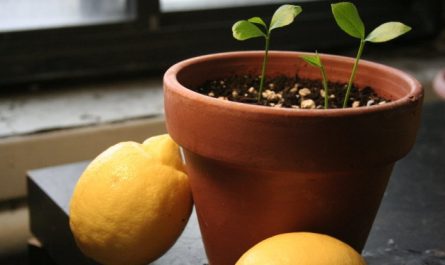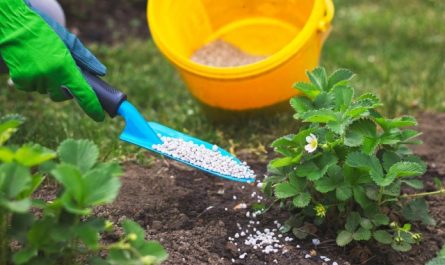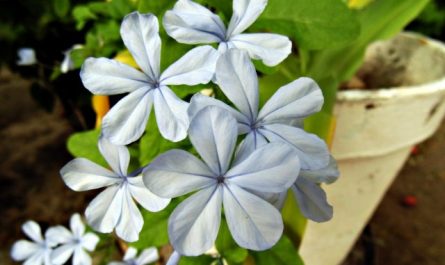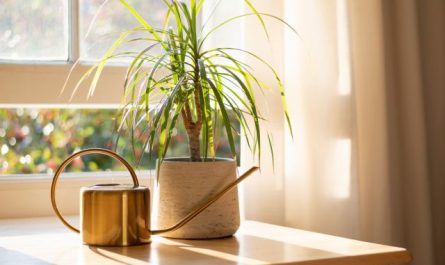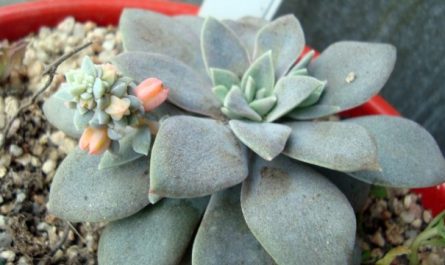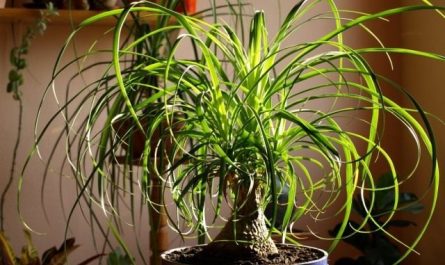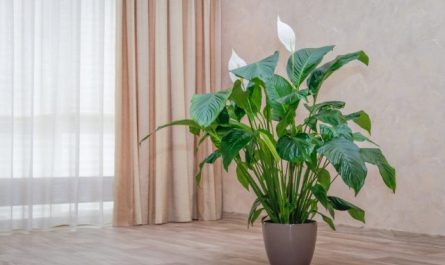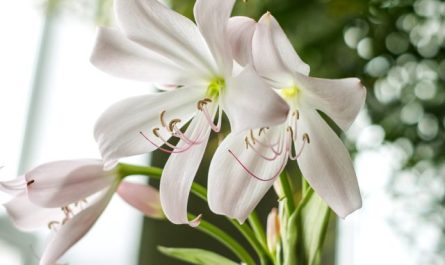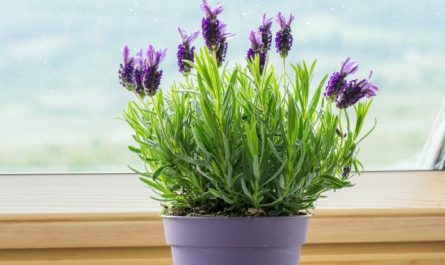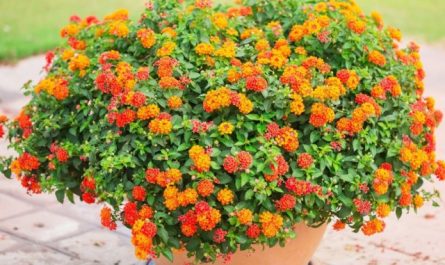Aspleniums are quite unpretentious and very beautiful ferns. In nature, they are widespread throughout the world. In Russia, there are about 11 species. In temperate latitudes, low species with pinnate or forked leaves and short vertical or creeping rhizomes are more common; in the tropics, large ones with pinnate or entire leaves, resembling green fountains, up to 2 m long.

Asplenium species that grow in the temperate zone on rocks and on stony forest soils feel great in open ground on retaining walls, alpine hills and rocky gardens, in the shade with sufficient moisture. Tropical species, which will be discussed further in this material, are popular indoor plants.
Description of Asplenium
Race Asplenium, or Kostenets (Asplenium) unites about 500 species of ferns of the family Aspleniaceae (Aspleniaceae). These are perennial herbaceous plants, terrestrial epiphytes; the rhizome is creeping, short, protruding, sometimes erect, in soft scales. The leaves are simple, entire to pinnately dissected, smooth. Sporangia (reproductive organs) are located on the underside of the leaves, on forked free veins. The petiole is dense.
Aspleniums are widespread in all zones of the Western and Eastern hemispheres; among the representatives of the genus there are deciduous species, as well as non-winter-hardy and winter-hardy ones.
In culture, they are represented by species that are very different in appearance from each other. In indoor culture, evergreen tropical species are most often cultivated.
Popular types of indoor asplenium
Asplenium australis (Asplenium australasicum)
Homeland – Eastern Australia, Polynesia. Epiphytic plant with large, up to 1,5 m long, 20 cm wide leaves. They are collected in a dense, rather narrow funnel-shaped rosette. The rhizome is straight, thick, covered with scales and many tangled adventitious roots. The leaves are entire, sometimes irregularly cut, oblanceolate, with the greatest width in the middle or slightly above the middle of the plate, rather sharply narrowing towards the bottom into a very narrow base. Sori (spore-bearing organs) are linear, located obliquely in relation to the midrib of the leaf.

Asplenium nidus (Asplenium nidus)
Homeland – humid tropical forests of Africa, Asia and Polynesia. In nature, this fern leads an epiphytic lifestyle, on the trunks and branches of other plants. It has a thick rhizome and leathery large whole sword-shaped leaves, reaching large sizes. They form a dense rosette on the top of the rhizome. On the uncut leathery, green leaves there is a black-brown middle vein.
The leaves together with the scaly rhizome and tangled roots form a kind of “nest”, which is why it is sometimes called the bird’s nest fern. Asplenium nidus is easy to grow indoors. In culture, it is not so huge, but it looks very impressive.

Asplenium scolopendra (Asplenium scolopendrium)
Asplenium scolopendra is very similar to Asplenium nidus. Sometimes it is found as scolopendra leaflet (Phyllitis scolopendrium), also called “deer tongue”. In England and Germany, this plant is found in the wild, there are many hybrid forms. The strap-shaped leaves initially grow upwards, and over time they curve into an arc. The edges of the leaves are wavy, in the varieties crispum and undulatum – curly. The plant is ideal for winter gardens and cool rooms.

Asplenium bulbifera (Asplenium bulbiferum)
Homeland – New Zealand, Australia, India. Herbaceous deciduous fern. Leaves are tripinnate, oblong-triangular, 30-60 cm long and 20-30 cm wide, light green, hanging down from above; Petiole is straight, up to 30 cm long, dark. Sporangia are located on the underside, one on each lobe. On the upper side of the leaves, brood (adventitious) buds are formed; they germinate on the mother plant. Asplenium bulbifera niroko is widespread in culture; grows well in rooms and moderately warm areas.

Asplenium viviparous (Asplenium viviparum)
The homeland of Asplenium viviparum is the island of Madagascar, the Macarena Islands. A terrestrial perennial rosette plant. Leaves with short petioles, twice and four times pinnate, 40-60 cm long, 15-20 cm wide, arcuately curved. Segments are very narrow, linear to almost filiform, up to 1 cm long, about 1 mm wide. Sori are located along the edge of the segments. On the upper side of the fern leaves, brood buds develop, which germinate on the mother plant. Having fallen into the ground, they take root.

Features of care for indoor asplenium
Temperature: Asplenium is a heat-loving fern, it is desirable that the thermometer column is around 20..25 °C, in winter not lower than 18 °C. Does not tolerate drafts.
Lighting: The place for asplenium should be quite light, but with shading from direct sunlight, light partial shade is possible, but not a dark place.
Watering: Water abundantly from spring to autumn and moderately in winter. Instead of regular watering, it is recommended to immerse the pots with the plant in a container of water from time to time. Asplenium does not tolerate hard and chlorinated water; for watering, use water at room temperature, settled for at least 12 hours.
Fertilizer: Fertilize the fern once a month from April to September with a weakly concentrated fertilizer solution (approximately half the dose for plants such as philodendrons or ficus).
Air humidity: Aspleniums need humid air, about 60%. If the air is dry, the plant’s leaves dry out. It is best to place it on a wide tray filled with expanded clay or gravel. Water both the soil in the pot and pour water into the tray. If there is a central heating radiator nearby, it should always be covered with a damp towel or sheet.
Transfer: Asplenium is replanted annually or every other year. It does not tolerate planting in a container that is too large. The soil should have a slightly acidic reaction. The soil is loose – 1 part leaf, 2 parts peat, 0,5 parts humus soil and 1 part sand. You can use a purchased soil mixture for orchids.
Reproduction: Asplenium is propagated, like all other ferns, by spores and division of the bush.

Growing Asplenium at Home
Aspleniums – do not like too much sunlight. Sunlight causes browning and dying of leaves – (wai). Grows well near north-facing windows.
For good growth, the optimal temperature for asplenium in summer is 22 °C, with low air humidity the plant does not tolerate temperatures above 25 °C. In winter, the optimal temperature is within 15..20 °C, a decrease in temperature below 10 °C can lead to the death of the fronds, and sometimes to the death of the plant. Plants do not tolerate drafts, cold air and dust.
In summer, asplenium is watered regularly, the soil ball should not dry out, this can lead to the death of the fronds, and over-watering should not be allowed. The best way to water is by lowering the plant into a container of water; as soon as the top layer starts to shine with moisture, the pot is taken out, excess water is allowed to drain and put in a permanent place. In winter, the fern is watered moderately, depending on the requirements of the plant and the dryness of the air. Soft water at room temperature is used for watering. It should be remembered that over-drying, as well as excessive over-watering of the soil ball, are detrimental to the plant.
Asplenium likes frequent spraying; in summer, at high temperatures (above 22 °C), dry air can cause the fronds to die off; if this happens, cut them off. Spray the plant regularly, and new fronds will soon appear. Place the pot with the fern in a larger container filled with wet peat, or on a tray with wet pebbles. In winter, spray the asplenium with soft, warm water every day; if the room is cool, spraying should be reduced to avoid mold.
In summer, once a month, when watering, feed the asplenium with mineral and organic fertilizers of half concentration.
Only damaged or very old leaves should be trimmed. If the asplenium bush dries out by accident, trim off the dried leaves, and what remains, water regularly and spray twice a day – young leaves will soon appear. In addition, daily spraying of the fern keeps the plant clean. Do not use any preparations to make the leaves glossy.
Asplenium is replanted in the spring (if the plant is too small for the pot), after the plant begins to grow. For young plants with delicate roots, use a mixture of peat, leaf, humus soil and sand (2:2:2:1). Large adult specimens of the fern are planted in a mixture of turf, leaf, peat, humus soil and sand (2:3:3:1:1). Small shards and pieces of charcoal are added to this mixture, you can also add chopped sphagnum moss.
When replanting, remove dead roots, and do not cut living ones and, if possible, do not damage them, as they grow very slowly. Do not press the soil too hard – ferns like it when the soil at the roots is loose. After replanting, water the plant with warm water and spray it. Choose a wide pot for planting.

Reproduction of Asplenium
Asplenium is propagated by division of the rhizome, brood buds and spores.
The overgrown asplenium is propagated by dividing the bush in the spring, during transplantation. The bush is carefully divided by hand, paying attention to the number of growth points. If there is only one growth point or they are few, then the fern cannot be divided, this can lead to death. Young plants do not immediately begin to grow after division.
In viviparous species of Asplenium, meristematic tubercles appear on the veins, giving rise to a brood bud. A daughter plant with dissected leaves and short petioles develops from the bud. Separating and falling off, they move on to independent existence. You can break off the brood buds of the fern together with pieces of frond and root them in a loose substrate. You can also use young plants that have already rooted independently.
You can try to propagate asplenium from spores that form on the underside of the leaves. They are sown in early spring, preferably in a seedbed heated from below, where the temperature is maintained at 22 °C.
Cut off a fern leaf and scrape the spores onto paper. Fill the seedbed with a layer of drainage and disinfected soil for sowing seeds. Water the soil well and scatter the spores as evenly as possible. Cover the seedbed with glass and place it in a dark, warm place. Remove the glass briefly every day for ventilation, but do not allow the soil to dry out.
The seedbed should be kept in the dark until the plants appear (this will happen in 4-12 weeks). Then move it to a lighted place and remove the glass. When the plants grow, thin them out, leaving the strongest ones at a distance of 2,5 cm from each other. Young specimens that develop well after thinning can be transplanted into pots with peat soil – 2-3 plants together.
Diseases and pests of asplenium
The most common diseases, such as gray mold and bacterial leaf diseases, which cause them to dry out, can be prevented by limiting watering of the fern. The appearance of spots, which are caused by Phyllosticta and Taphina, can be eliminated with fungicides based on zineb and maneb. Leaf spotting can be associated with improper use of fertilizers (exceeding the required dose) or unsuitable soil composition for the fern: it should have low acidity.
Brown spots may be a sign of foliar nematode – in this case, it is better to throw the plant away – it is very difficult to fight nematodes. Damaged leaf edges may indicate unfavorable environmental conditions (dry air, irregular watering, etc.). It is not recommended to use leaf gloss!
